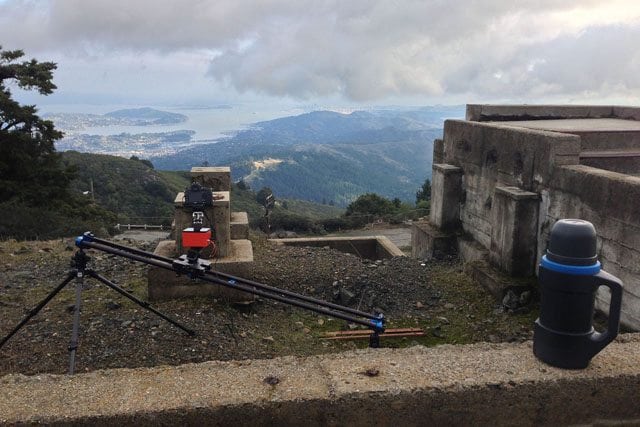Gary Yost: West Peak: The Project, Part 2


Photographer and filmmaker Gary Yost writes about his project to document the history of the lost West Peak of Mt. Tamalpais.
Over the past two months I’ve been busy conducting initial tests of new motion-control equipment I’ve acquired for creating the time-lapse portion of the project. One of my frustrations with the two-foot slider I used in the Fire Lookout piece is that it wasn’t long enough to provide enough visual parallax cues to make larger scenes look three-dimensional. These parallax cues are essential to providing an immersive sense of the scene because when the camera is moving, closer objects will move across your visual field much more quickly than objects farther away. When shooting basic time-lapse sequences you can easily lock the camera down on a tripod and shoot a frame every few seconds. That’s easy to do, but to get parallax effects you need to mount the camera on a motorized slider that will move it a fraction of an inch after every shot. This technique was invented by Ron Fricke in the late 1970s for the groundbreaking film Koyannisqatsi, and then refined for his later masterpieces, Chronos, Baraka, and 2012’s Samsara.


